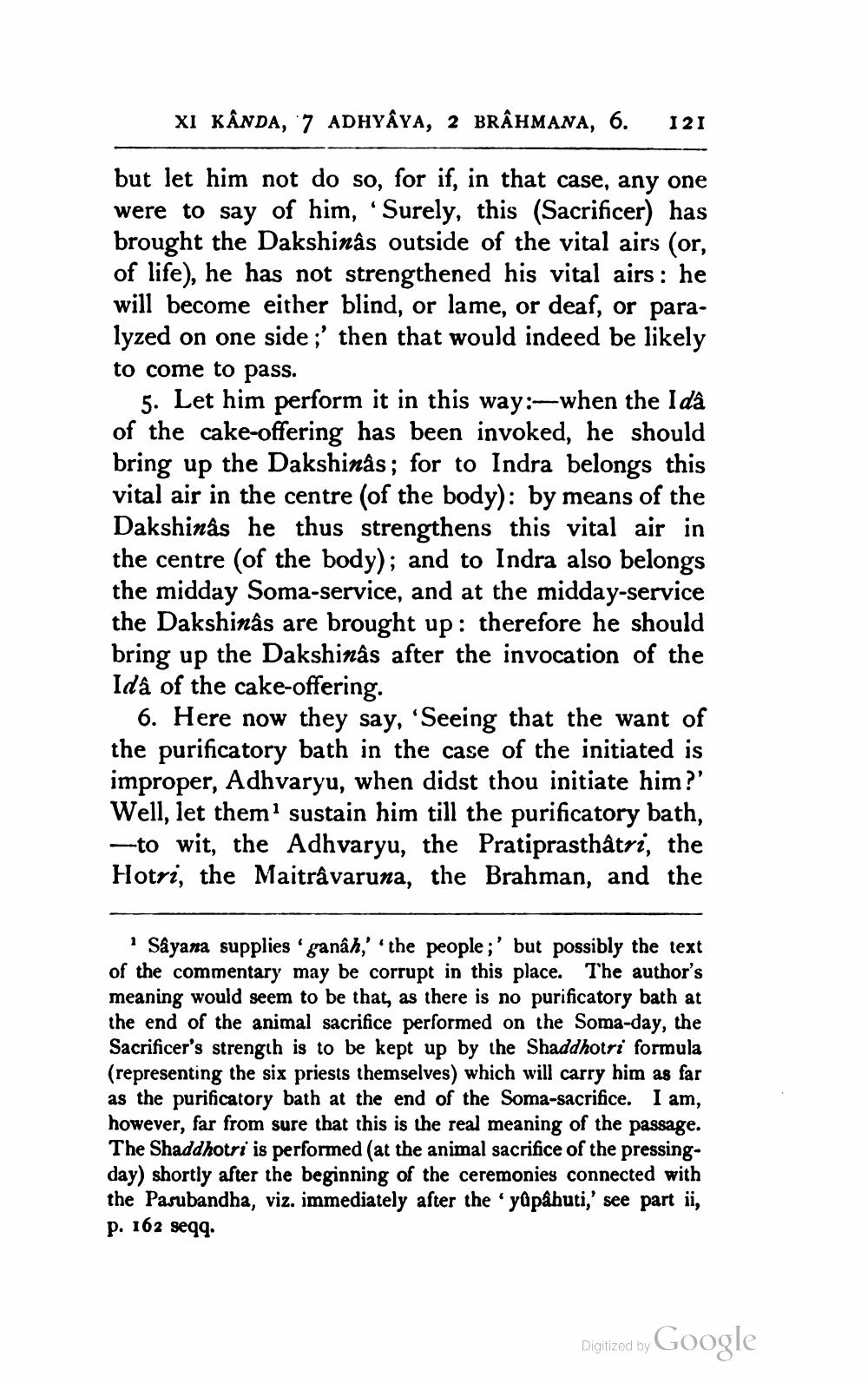________________
XI KÂNDA, 7 ADHYAYA, 2 BRÂHMANA, 6.
121
but let him not do so, for if, in that case, any one were to say of him, 'Surely, this (Sacrificer) has brought the Dakshinâs outside of the vital airs (or, of life), he has not strengthened his vital airs : he will become either blind, or lame, or deaf, or paralyzed on one side;' then that would indeed be likely to come to pass.
5. Let him perform it in this way:-when the Ida of the cake-offering has been invoked, he should bring up the Dakshinas; for to Indra belongs this vital air in the centre (of the body): by means of the Dakshinas he thus strengthens this vital air in the centre (of the body); and to Indra also belongs the midday Soma-service, and at the midday-service the Dakshinâs are brought up: therefore he should bring up the Dakshinâs after the invocation of the Idâ of the cake-offering.
6. Here now they say, 'Seeing that the want of the purificatory bath in the case of the initiated is improper, Adhvaryu, when didst thou initiate him?' Well, let them sustain him till the purificatory bath, -to wit, the Adhvaryu, the Pratiprasthâtri, the Hotri, the Maitrâvaruna, the Brahman, and the
Sâyana supplies' ganah,' the people;' but possibly the text of the commentary may be corrupt in this place. The author's meaning would seem to be that, as there is no purificatory bath at the end of the animal sacrifice performed on the Soma-day, the Sacrificer's strength is to be kept up by the Shaddhotri formula (representing the six priests themselves) which will carry him as far as the purificatory bath at the end of the Soma-sacrifice. I am, however, far from sure that this is the real meaning of the passage. The Shaddhotri is performed at the animal sacrifice of the pressingday) shortly after the beginning of the ceremonies connected with the Pasubandha, viz. immediately after the yüpâhuti, see part ii, p. 162 seqq.
Digitized by Google




